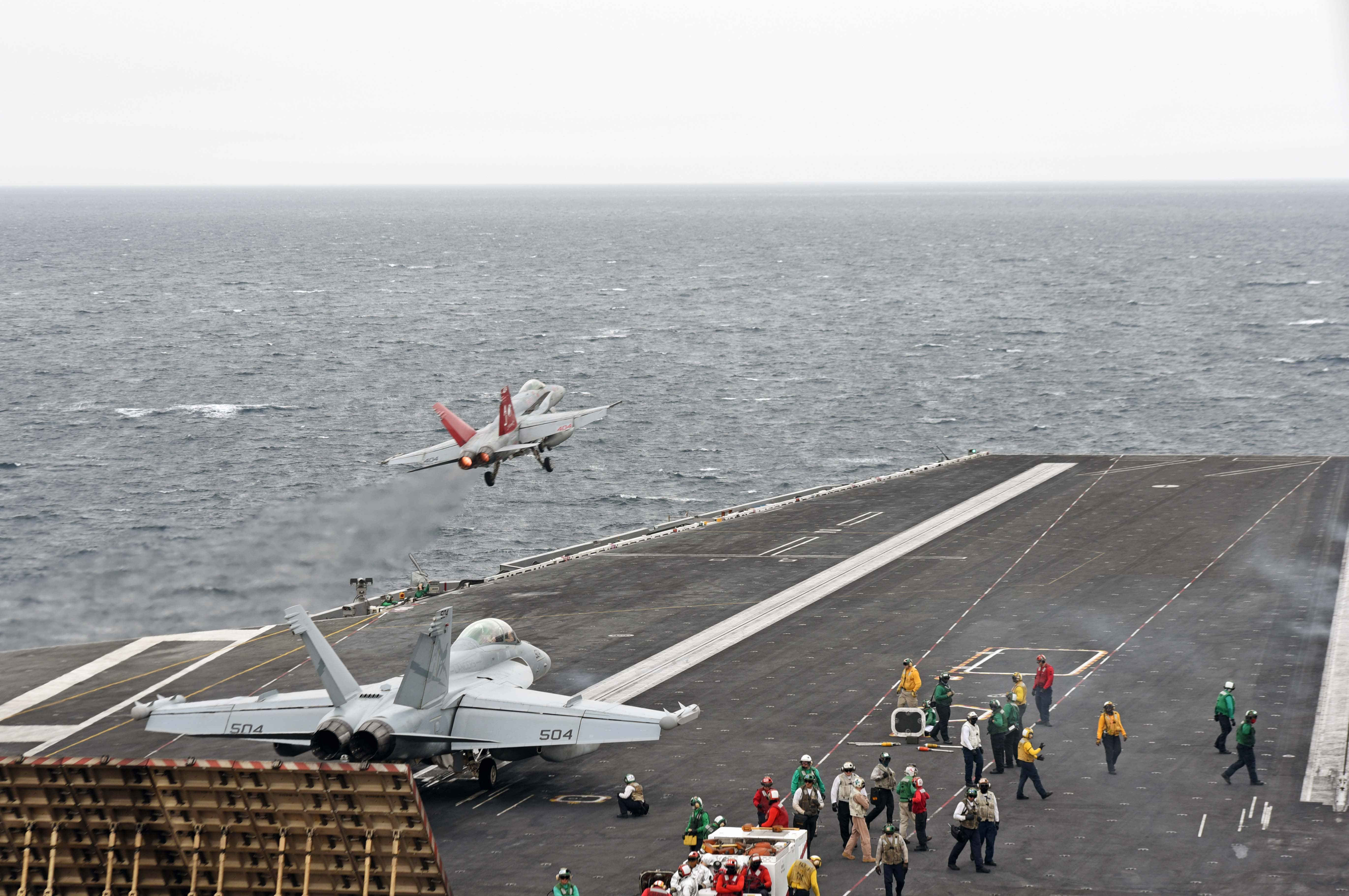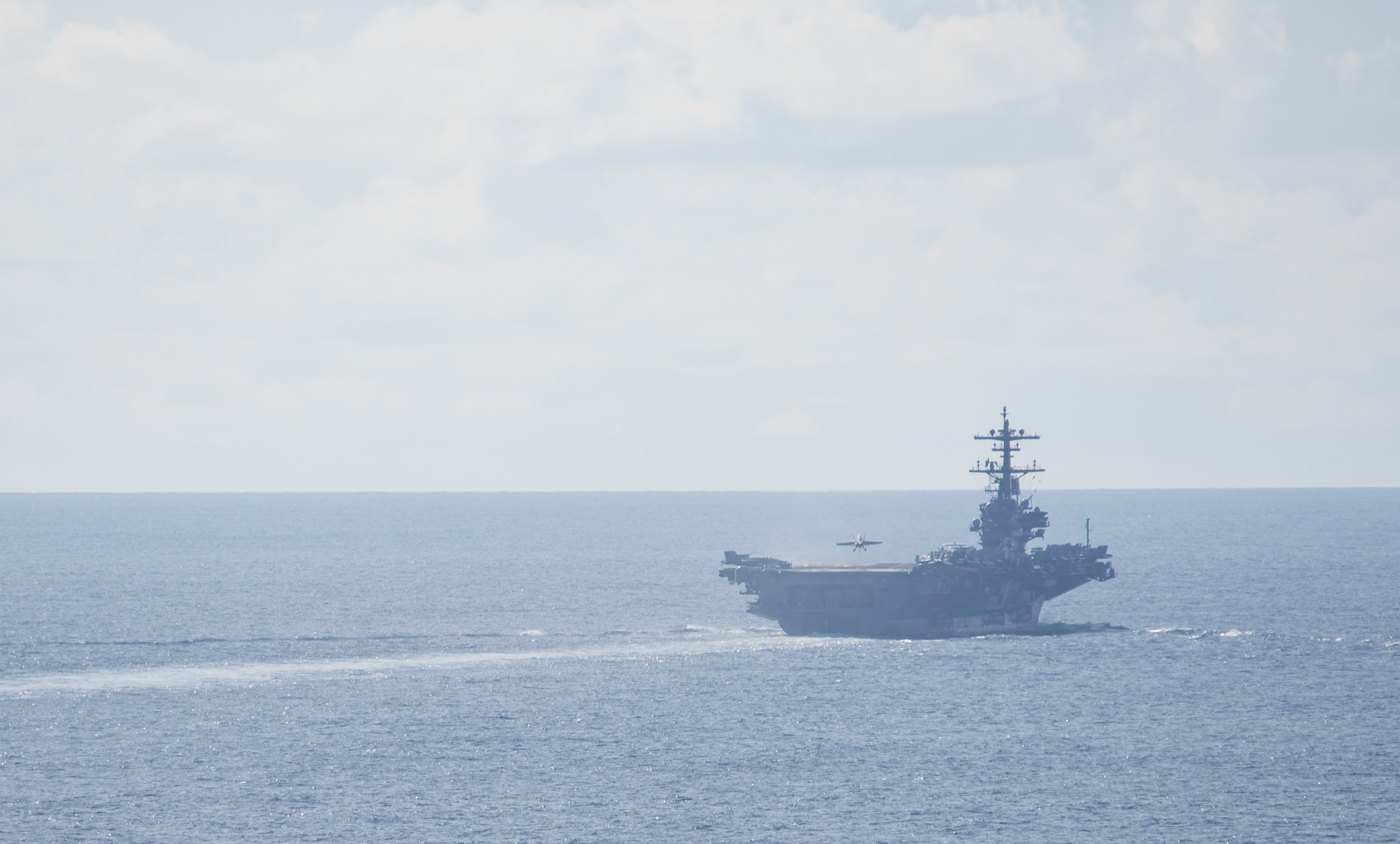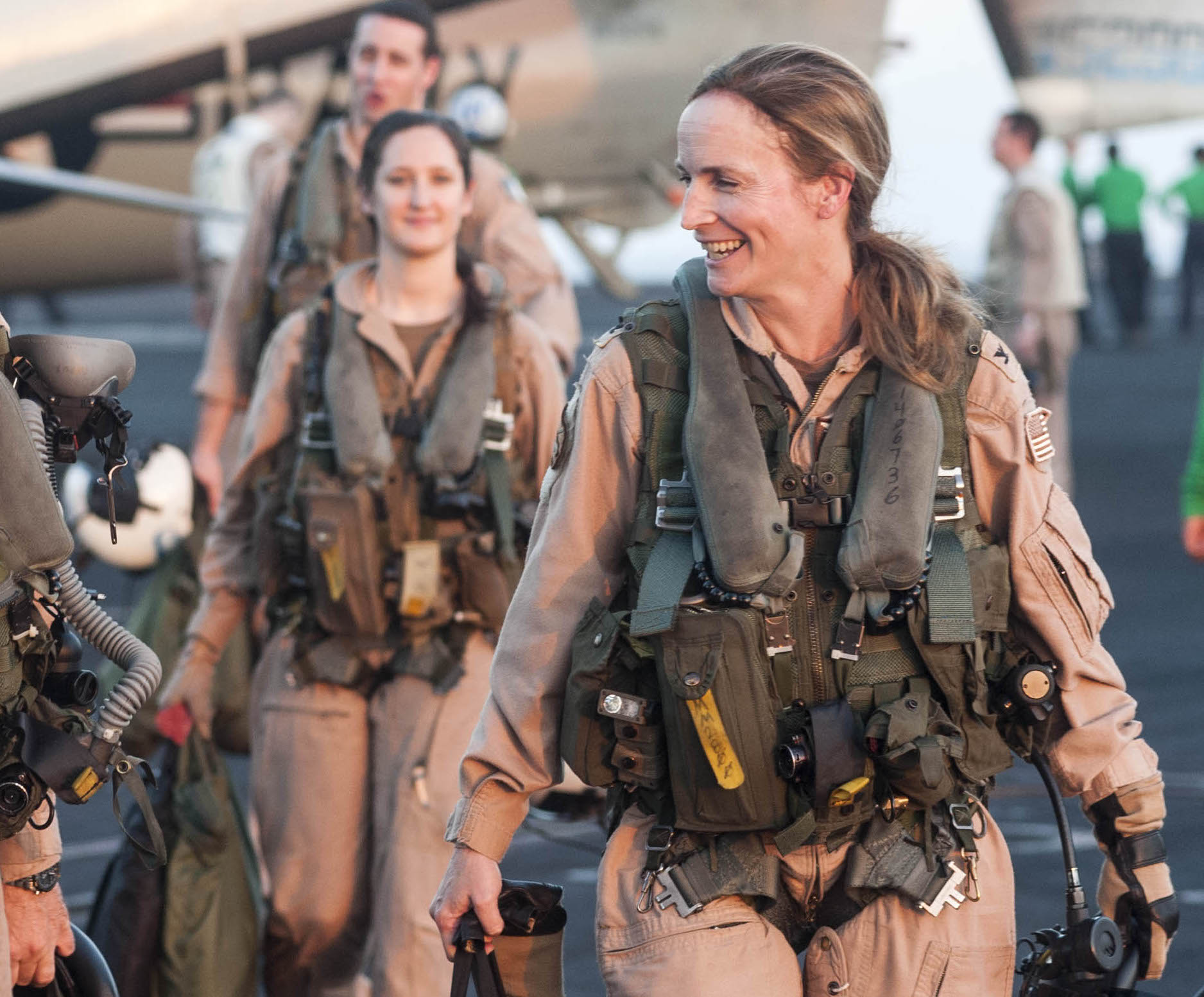
The Navy is grappling with even more questions about the physiological episodes its fighter pilots have been facing, after Carrier Air Wing 8 deployed with additional tools to measure and treat PEs and returned with less clarity on the connection between cabin pressure and physical side effects.
In April the Navy directed a 30-day comprehensive review of physiological episodes, which led to the requirement to have a single aviator leading the investigation effort for the Navy. In August Capt. Sara Joyner was tasked with leading the PE investigation effort.
Joyner and Carrier Air Wing 8 commander Capt. James McCall spoke to two reporters today to talk about the progress in studying, measuring, treating and attempting to predict physiological episodes – which include decompression sickness from pressure fluctuations or hypoxia from insufficient or contaminated oxygen.
A major ongoing challenge, McCall said, is that a physiological event is defined not by cabin pressure or oxygen levels, but rather how that environment affects the body – and there are so many variables at play that the Navy still doesn’t have a good understanding of what combines to create a harmful situation for a pilot’s body.
“I have watched what I would consider to be the exact same pressure profiles on the slam stick affect two different aircrews completely differently,” McCall said, referring to a USB stick-sized device that precisely measures and digitally records cabin pressure throughout a flight.
“In one case, completely asymptomatic on the aircrew, he didn’t even feel the need to report anything, he just felt very normal. And the other aircrew we ended up sending to a hyperbaric chamber – for the exact same pressure profile that was not even outside the aircraft limits.”
“The pressure swing was not what we would consider to be outside NATOPS (Naval Air Training and Operating Procedures Standardization) limits,” McCall added later in the interview.
“The aircraft had flown earlier in the day with another aircrew and exhibited the same profile that we pulled down digitally for pressure, and that aircrew was completely asymptomatic. So again, I think that actually highlights what a challenge it is when we look at the human body, trying to figure out … not only how we diagnose things but how we prevent them. Because again, we looked at the profile that we pulled off that piece of gear … and we had almost the same profile on two different pilots in the same aircraft, and one of them, he went on to fly later that day, no symptoms at all, and the other aircrew, again, post-flight started to complain of symptoms that we would consider to be [decompression sickness]-like, and then upon consult with our flight surgeons and our dive docs, that’s when we decided to put that aircrew in the portable recompression chamber.”

Overall, McCall said, his pilots experienced 13 physiological episodes during a seven-month deployment on aircraft carrier USS George H.W. Bush (CVN-77). Four of those incidents required putting the aircrew into a portable recompression chamber to recover, after several hours of breathing from an oxygen mask did not alleviate the symptoms. One of those four cases involved the two aircrew on an EA-18G Growler, who experienced decompression sickness-like symptoms during their return to the ship from a combat sortie. The other three involved fluctuations in cabin pressure that sickened F/A-18C pilots from Strike Fighter Squadron (VFA) 37.
Bush was the first carrier to deploy to a combat zone with a portable recompression, or hyperbaric, chamber to help treat decompression sickness symptoms.
McCall said the Navy has an effort underway right now to put jet aircrews – those who operate the F/A-18 Hornets and Super Hornets, the EA-18G Growlers and the T-45C Goshawk trainers – into ground-based simulators that would help them safely experience pressure fluctuations or low oxygen levels to understand how their bodies react and therefore what symptoms to be on the lookout for. But McCall added that lack of sleep, dehydration and other factors can influence the onset of these physiological episodes, complicating what the Navy is trying to do.
Vice Chief of Naval Operations Adm. Bill Moran previously told USNI News that “what we’ve got to get away from is reliance on [individual perceptions and self-reporting], and more from data. So putting sensors on these airplanes so we can collect data and get a richer understanding of what’s going on.”
Joyner elaborated on the effort to collect data, saying, “we are building a suite of digital information about the aircraft to understand what other things might be causing the physiological episodes. Because the human being is a complex system, there are many things to consider beyond just the oxygen content delivered, and therefore we are working with things like a slam stick, which is something that measures the cockpit variations in pressure down to 1 Hertz … in order to understand what is going on in the cockpit that actually results in a physiological episode.”
“Right now we’re writing a piece of code that will alert the aircrew, give them a visual indication that there was a boundary that was exceeded, so therefore they can be more vigilant in making sure if they feel any impacts reporting what they experienced,” Joyner continued.
“So digitizing the cockpit is a big initiative of ours in order to not only, we want to understand what causes physiological episodes but we’re also building to indicating, warning and preventing. So very important we understand what causes them. So in the future we’re working on putting in something called a Cockpit Pressure and Oxygen Measurement (CPOM) system, it’s going to be able to indicate digitally to the pilot what’s going on with his oxygen, with the pressure, and as we understand what causes physiological episodes it’s going to be able to give them warnings and cautions.”

Joyner was also hesitant to call the pilots’ condition decompression sickness, in a nod to just how many factors are at play when studying PEs.
“It’s important to note that while we’re saying that maybe it’s pressure, there’s a lot of work to be done. We’ve gone through very methodically to make sure we’re not experiencing some other unknown factor here that’s impacting our aircrew – so we have gone down and researched contamination to an extreme depth to make sure there are no contaminants coming through to our aircrew,” she said.
“We have gone through and are also looking at the oxygen system to make sure that there’s no impact not being evident with the oxygen system. And then pressure is something we see, and it has an actual association (with the symptoms), but its actual causal nature is not established yet.”
Joyner added that the hyperbaric chambers helped the aircrew recover quickly the four times they were used, but deploying more of these chambers is not a viable long-term solution.
“The hyperbaric chamber is something we use, but it’s certainly not something we want to use forever or expect to – we expect to fix the machine and understand the human so we can move away from this type of care,” she said.
McCall made clear that he and his team managed the PEs during the deployment and did not let them affect the air wing’s ability to meet operational commander needs.
“In no way did this impact our ability to execute our operations on deployment. We were able to treat these – none of these actually happened on combat sorties or during the course of combat. They did not, in fact, put our aircrew down for any length of time that affected our combat operations, so we were able to adequately meet our commander’s operational requirement while dealing with these incidents on cruise. For our commanders, certainly they have to balance risk versus operational commitments, and I think we did a good job of that while deployed.”
Still, he noted, “employing combat requires our pilots to be at the top of their game, we need them to be physiologically ready to go. … What we don’t want is the airplane detracting from that in any way.”





